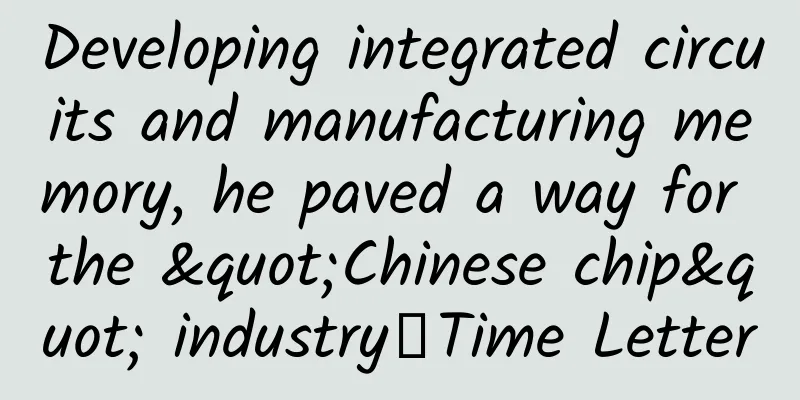High-precision maps lead the way for autonomous driving, who will take the lead in the 20 billion market?

|
Autonomous driving is the future direction of the automotive industry, and high-precision maps can be said to be the most important infrastructure in autonomous driving. For driverless vehicles, it is better to say that they are driving on high-precision maps than driving on the road. With the gradual development of autonomous driving, the market demand for high-precision maps has become more urgent. In China, not only have established map vendors such as AutoNavi, NavInfo, and Baidu already made early arrangements, but startups such as Kuandeng Technology and Momenta have also received huge amounts of financing and joined the competition in the high-precision map market. According to estimates by investment bank Goldman Sachs, the global HD map market will grow to $9.4 billion by 2025. In the next few years, HD maps will usher in a golden period of development. In the Chinese market, some institutions have stated that the size of the HD map market is at least RMB 20 billion. In fact, high-precision maps not only provide more complete safety protection for autonomous driving, but will also bring important changes in the business model for the entire global intelligent transportation industry. High-precision maps are the infrastructure for autonomous driving High-precision maps are mainly used in autonomous driving above level L3. For this level of autonomous driving, human involvement in the driving process is greatly reduced, and the vehicle will dominate the entire driving process. Unlike traditional navigation maps that only need to assist people in driving, high-precision maps need to provide road condition information or independent variables for autonomous driving to help autonomous vehicles make judgments and decisions. The accuracy requirement of high-precision maps is at the centimeter level, which is much higher than the "meter" level of traditional navigation maps. Considering the characteristics of machine processing information, high-precision maps not only require higher accuracy, but also contain much more complex information than traditional navigation maps. Traditional maps record information such as the shape, slope, curvature, and direction of the road. In addition to these, high-precision maps also need to include lane attribute information (lane line type, lane width, etc.), as well as a large amount of target information such as guardrails, trees, road edges, and road signs near the road. High-precision maps are like the memory of self-driving cars. Without memory, no matter how fast the eyes (lidar, camera) acquire information or the brain (on-board AI) thinks, they still cannot fully control the driving environment. High-precision maps are a type of sensor for driverless cars. Driverless cars also have multiple sensors such as lidar and cameras, but the actual effects of these sensors are easily affected by bad weather (heavy snow, fog, and dust), posing a hidden danger to the safety of autonomous vehicles. High-precision maps are the most stable sensor for driverless vehicles and also the sensor with the largest visual range. Other sensors will try to reduce redundant data in order to increase the speed at which chips process data. However, high-precision maps do not occupy vehicle computing resources and can use redundant data to verify each other, thereby improving the stability and accuracy of the entire system. High-precision maps can not only improve the safety of autonomous driving, but also reduce the cost of vehicle-mounted sensors and control systems. High-precision maps contain rich information and can accurately predict the driving environment, allowing cars to focus their limited computing resources on dynamic objects and emergencies on the road. High-precision maps are like tracks for driverless vehicles. Without high-precision maps, the safety of driverless vehicles is difficult to ensure. Compared with humans, machines have higher requirements for the real-time nature of data reading. This requires high-precision maps to be able to update map data in real time to ensure the safety of autonomous vehicles. High-precision maps require high accuracy, high richness, and real-time updates, all of which are to ensure the safety and efficiency of autonomous driving. Established image vendors and start-ups The high requirements of HD maps for complexity, accuracy and real-time updates make the production of HD maps very difficult. In order to ensure the safety of autonomous driving, the production of HD maps cannot be sloppy. China has a vast territory, and the work of collecting high-precision maps is particularly arduous. High-precision maps require high costs in terms of data collection, data processing, and later real-time updates. After high-precision map products are produced, they still need to undergo tedious testing and adaptation with OEMs and parts suppliers, which also increases the difficulty of making high-precision maps. The currently popular crowdsourcing model still cannot change the fact that high-precision map companies need to invest huge amounts of capital in the early stages of their growth. The heavy capital threshold is unavoidable for both established map vendors and start-ups. The high capital threshold means that not many companies will survive in this industry in the future. It is very difficult for small or cross-border companies to enter. When the market matures, referring to the traditional navigation map market, it is estimated that there will be only three or four players who can truly win. Some start-ups have received a lot of financing. Domestic companies such as Kuandeng Technology and Momenta received tens of millions of dollars in financing in the second year of their establishment. In the latest round of financing, Kuandeng Technology even reached a scale of 100 million yuan. Liu Jun, founder and CEO of Kuandeng Technology, even publicly stated that he would launch the first high-precision map in China this year. However, this amount of money is only entry-level for the high-precision map industry. If these start-ups want to develop further, they must obtain further financing and make long-term investments. High cost is a common feature of the industry, and technical means to reduce costs have become a very favorable advantage in industry competition. Kuandeng uses a data collection mode that emphasizes vision. Even if it is the first time to collect road data, it does not require expensive laser radar. Regarding the accuracy of this collection technology, Kuandeng Technology CTO Feng Hanping said that through post-production, it can achieve the same accuracy as the traditional laser radar mode. Feng Hanping, CTO of Kuandeng Technology Kuandeng Technology has greatly reduced costs while ensuring data accuracy. Low-cost map collection equipment also makes the crowdsourcing model more feasible. The advantage of established map vendors in terms of funding is very obvious. Most established map vendors are strong and can rely on traditional businesses to supplement their capital. Moreover, companies like AutoNavi and NavInfo have BAT backgrounds and are much more financially stable than start-ups. Although high-precision maps are very different from traditional navigation maps, the partners accumulated by old map vendors, especially AutoNavi and NavInfo in the navigation map pre-installation market, will bring a lot of convenience to the development of the high-precision map market. AutoNavi has taken the first step in the commercialization of high-precision maps. AutoNavi's high-definition maps have been applied to GM's new car Cadillac CT6. Wei Dong, president of AutoNavi's automotive business unit, said that AutoNavi has benefited greatly from its cooperation with GM. In the cooperation with GM, AutoNavi needs to compile the original standardized map data to make it conform to GM's technical standards, and then integrate it with GM's hardware before it can be put into practical use. There is still a certain distance between high-precision maps from technical achievements to practical achievements, and the cooperation with GM has enabled AutoNavi to truly achieve this leap. However, start-ups also have their own unique advantages. Most of the established map vendors have BAT backgrounds. In comparison, start-ups like Kuandeng have the status of neutral map vendors. Car manufacturers will have fewer concerns when cooperating with them. Kuandeng Technology itself also hopes to remain independent while remaining open, so as to gain a more advantageous position in the market competition. Another good news for startups is that high-precision maps are still in their infancy, and the entire industry still has a long way to go and is far from reaching maturity. Traditional navigation maps are very different from high-precision maps. For established map vendors, a lot of work needs to be done all over again. To a certain extent, everyone is standing on the same starting line, and start-ups still have the opportunity to challenge established map vendors. When talking about high-precision map startups, Yu Lizhi, R&D director of intelligent maps at NavInfo, believes that startups are not without opportunities if they can choose the right technology path and gain recognition from enough customers. Yu Lizhi, R&D Director of NavInfo Intelligent Maps Compared with established map vendors, start-ups face greater pressure to commercialize high-precision maps. After all, established map vendors still have traditional businesses and are better positioned to fight a protracted war. Kuandeng Technology has publicly stated that it does not want to continue to rely on financing and hopes to achieve commercialization as soon as possible. The BAT background brings more than just capital convenience to established map vendors. Internet giants are very capable of integrating various resources and can provide better industrial support for their own high-precision map companies. High-precision maps are inseparable from high-precision positioning. Qixun Location, which focuses on high-precision positioning, was jointly established by Alibaba Group and China North Industries Group Corporation. The cooperation between AutoNavi and Qixun will also accelerate the further implementation of AutoNavi's high-precision maps. Alibaba has a large-scale e-commerce business, which generates a large amount of logistics business. Alibaba generates a large amount of data in the freight process, and this data has been connected with AutoNavi, which will also strengthen AutoNavi's competitive advantage. When asked whether other parts of autonomous driving are being developed in addition to high-precision maps, Yu Lizhi, R&D director of NavInfo Intelligent Maps, said that other related technologies are also being developed. AutoNavi directly stated that AutoNavi does not make hardware or autonomous driving, but only focuses on high-precision maps. Wei Dong, president of AutoNavi's automotive division, stressed that in the future, the competition for high-precision maps will not be between those who have them or not, but between those who are good and those who are bad. Car manufacturers and consumers will pursue the best high-precision maps. Of course, AutoNavi can take advantage of Alibaba's support, so there is no need for it to be greedy and seek bigger. It is difficult to say which of the two strategies is better: focusing on high-precision maps or deploying in a wider range of autonomous driving. Focusing makes it easier to concentrate efforts to make breakthroughs, and a systematic layout may win a broader development space in the future. However, one thing is certain. High-precision maps must rely on supporting technologies to be truly implemented in autonomous driving vehicles, such as high-precision positioning, 5G technology, and cloud platforms. High-precision maps are a link in the huge industry chain of autonomous driving, and their development will inevitably be affected by the development of related technologies. At present, both established map vendors and start-ups are mainly developing high-precision maps for L3 and L4 autonomous driving, and the specific application scenarios are mainly highways and urban highways. Due to the limited development speed of autonomous driving technology, high-precision maps are still a long way from being truly applied to general urban roads. For high-precision map companies, independent intellectual property rights are crucial. Although self-development will increase initial investment and consume a lot of time, if you cannot master the key technology yourself, you will need to pay high patent fees to others. More importantly, high-precision maps are still far from perfect and will be continuously updated and upgraded in the future. If you do not have core intellectual property rights, you will encounter many problems in subsequent updates and upgrades, which will affect the long-term development of the enterprise. Centralized or crowdsourced? Centralized mapping of high-precision maps is a development path that only the rich can afford. Currently, most of the companies that adopt the centralized mapping model are old-fashioned map vendors, and most of them have backgrounds in technology giants. AutoNavi said that the data update of the Cadillac CT6's high-precision map is still in the hands of AutoNavi, and currently does not rely on data sent back by the vehicle for map updates. However, AutoNavi also said that it does not rule out the possibility of adopting a crowdsourcing model in the future. Most start-ups adopt the crowdsourcing model with lower costs. Overall, most companies will apply the crowdsourcing model to varying degrees. Whether it is an old map vendor or a start-up company, most of them believe that the first information collection of a road section must be carried out by a professional high-precision data collection vehicle, and the crowdsourcing model cannot be used. The crowdsourcing model has low costs, but also low accuracy. If the crowdsourcing model is used for the first survey, the accuracy cannot be guaranteed, and the safety of autonomous driving cannot be ensured. Moreover, crowdsourcing from the beginning will greatly increase the difficulty and cost of data processing. In the end, not only is it difficult to guarantee accuracy, but the cost cannot be reduced. Amap currently prefers to conduct self-mapping and self-updating, while NavInfo and Kuandeng Technology have made it clear that they will adopt a crowdsourcing model to update data. Even if crowdsourcing is adopted, if the road changes too much, professional data collection vehicles will still be sent to re-survey and collect data. The significance of crowdsourcing is to quickly update local changes in road conditions at a lower cost. When high-precision map products are released, real-time updates of high-precision maps have become the most important task for map vendors. At this time, using professional high-precision map surveying vehicles to update is not only cost-prohibitive, but also a repetitive task. Therefore, although some map vendors now use crowdsourcing while others use centralized methods, they all agree that crowdsourcing will be the future of high-precision maps. Gaode said that the crowdsourcing model will become a common model in the future, but it will take time to ensure high-precision map accuracy and update data based on data sent back by vehicles. At present, high-precision maps have not been widely used commercially, and the realization of crowdsourcing needs to be based on the original road data of professional surveying. The accuracy of the on-board equipment is also required to return usable data. High-precision maps are mostly used in self-driving vehicles. These vehicles are generally high-end, and the accuracy of the on-board equipment is more in line with the standards for data updates. At present, most of the crowdsourcing models in China are still in the stage of discussion and negotiation. After adopting the crowdsourcing model, a large part of the update data of high-precision maps will come from vehicles on the road. The voice of car companies in data will be greatly enhanced. Yu Lizhi, R&D director of NavInfo Intelligent Map, said that crowdsourcing has not yet been fully implemented. Only when high-precision maps are gradually implemented and the value of data is more objectively evaluated, will the transaction of updated data be more easily operated. For map vendors, whoever can be the first to realize large-scale commercial use of high-precision maps will be more likely to implement crowdsourcing earlier and reduce costs. There are some examples of crowdsourcing models in foreign countries. IvI5, a foreign map startup, adopts a bounty crowdsourcing model to collect visual map information in a paid manner. Uber drivers can download IvI5's camera app and receive corresponding cash rewards for sending back data. Mapbox collects information from developers and conducts crowdsourcing. Paid or free? The main service objects of high-precision maps are self-driving vehicles. For safety reasons, self-driving cars are very dependent on high-precision maps. If traditional cars do not have navigation maps, they will only bring inconvenience. If self-driving cars do not have high-precision maps, they will become mobile killers. It is hard to imagine that autonomous vehicles will rely on aftermarket maps for safety. NavInfo and Kuandeng Technology are both targeting the original equipment market for their research on high-precision maps. Therefore, in the era of high-precision maps and autonomous driving, the focus of the in-vehicle map market will be on the original equipment market, and the aftermarket market is likely to shrink. The most easily conceivable business model is for map vendors to provide high-precision maps and for car companies to pay for authorization to use them. At present, since there are still few high-precision maps that are truly commercially available, the business model of high-precision maps is still in the stage of speculation and discussion. It is believed that referring to the development of traditional navigation maps, the high-precision map market is likely to undergo a transition from paid to free. In the early stages of HD map development, as map vendors invested a lot of money and the early HD map profit model was relatively simple, charging car manufacturers for HD map licensing fees would be the main way to make profits. As the reserves of high-precision maps become increasingly complete, the costs of map vendors will mainly come from data updates. At this time, the map vendors' reliance on car companies in terms of data will increase, and both parties need to negotiate around the data sent back by vehicles. For example, the map vendors can repurchase updated data or reduce map licensing fees. As the scale of application gradually expands, the marginal cost of high-precision maps will continue to decrease. During this period, the cost pressure on map vendors will gradually decrease, and the application threshold of high-precision maps will also gradually decrease. As the infrastructure for future autonomous driving and smart transportation, high-precision maps are likely to become a universal, low-threshold public service in the future. The relationship between car companies and map vendors will be mutually beneficial. Map vendors provide car companies with basic data for high-precision maps, and car companies feed back to map vendors with real-time updated data. The licensing fees for high-precision maps will continue to decrease and gradually tend to be free. High-precision maps have the basic attributes of navigation maps, and have advantages in accuracy and path planning that are difficult to match with traditional maps. At present, the profit model of traditional navigation maps can be grafted into the high-precision map industry after corresponding adjustments. The traffic attributes of high-precision maps themselves indicate that they will inevitably have inextricable ties with the Internet industry. Wei Dong, president of AutoNavi's automotive division, believes that not all vehicles will become self-driving vehicles in the future, but vehicle networking and built-in high-precision maps are likely to become hard conditions for cars to be on the road. Wei Dong, President of AutoNavi Automotive Division Autonomous driving is unlikely to be popularized in the short term due to cost and technical limitations. However, car networking and high-precision in-vehicle maps are easier to popularize in terms of technology and cost. Improving the accuracy of car networking and in-vehicle maps will significantly reduce traffic accidents and improve the driving experience. At present, it seems that autonomous driving technology will first be applied to high-end cars, driverless taxi fleets and unmanned freight transportation. The number of high-end car users is small but their spending power is strong. Driverless taxis mean a very high user frequency. Both will bring huge high-value traffic to high-precision maps. In the Internet era, traffic means commercial value. Cars will become the next traffic entrance for Internet companies to compete, just like mobile phones. In the Internet age, whoever controls the entrance to traffic by leveraging their own advantages will reap the greatest profits. Wei Dong said that in the future, high-precision maps will gradually shift from a forward payment model to a backward payment model, and from selling map data to making profits through applications and services. The future crowdsourcing model is also likely to adopt a social alliance, an Internet model where everyone works for me and I work for everyone. The huge commercial value of high-precision maps will become the focus of competition among Internet giants. Similar to mobile phones, map vendors control the entrance to traffic and thus the source of profits. The future is here. Who will take the lead in the 20 billion high-precision map market? Perhaps, the answer will continue to change with the continuous development of the autonomous driving industry, the emergence of new competitors and new business models. After all, everything has just begun. As a winner of Toutiao's Qingyun Plan and Baijiahao's Bai+ Plan, the 2019 Baidu Digital Author of the Year, the Baijiahao's Most Popular Author in the Technology Field, the 2019 Sogou Technology and Culture Author, and the 2021 Baijiahao Quarterly Influential Creator, he has won many awards, including the 2013 Sohu Best Industry Media Person, the 2015 China New Media Entrepreneurship Competition Beijing Third Place, the 2015 Guangmang Experience Award, the 2015 China New Media Entrepreneurship Competition Finals Third Place, and the 2018 Baidu Dynamic Annual Powerful Celebrity. |
<<: FF 91 starts vehicle assembly, the biggest progress in two years
Recommend
Playing with Douyin, from 0 to 1, from attracting fans to making money...
“ Tik Tok in the south, Kuaishou in the north”! W...
Can you drink water right after taking cough syrup? 99% of people do it wrong!
Recently, the comment section of a video about co...
Android simple "blow to achieve" and recording and playback examples
I've been working on something related to sen...
Fenda was once very popular, but then faded out of users’ sight. Why?
In 2016, when knowledge payment platforms were on...
After reading "Dream of the Red Chamber", I realized that coffee latte art is a leftover from the ancient Chinese...
Expert of this article: Pa Lize, Chief Physician ...
How did I manage to attract one user with a small activity costing 1 yuan?
As a means with extremely strong explosive power ...
The battery is running low again! Is there any cure for your battery anxiety?
In the era of popularization of smart devices, mo...
Android 11 Developer Preview New Features at a Glance
On February 20, 2020, Google released the first d...
The aerospace industry has come up with a "recycling" strategy: How does "Practice 19" open a new era of reusable satellites?
Author: Duan Yuechu, Huang Xianghong, Huang Yanho...
Why are you forced to insert ads? Talking about HTTPS connections
I believe many of my friends have encountered the...
Social live broadcast SOP and formula!
Brand traffic and conversion have always been ver...
Why are dryers, which are a must-have in almost every household abroad, so unpopular in the country?
Differences in concepts lead to a cold reception ...
It turns out that restoring your phone to factory settings has such a big impact! Do you understand it? Read it carefully before you proceed
Have you ever restored your phone to factory sett...
How to remove the crayfish thread? Can I eat shrimp without removing the shrimp thread? Introducing four tips for cleaning shrimp threads!
Every May, crayfish start to be available on the ...
How do astronauts know what time it is? Don't worry, they have "space watches"!
On Earth, we are used to working at sunrise and r...









